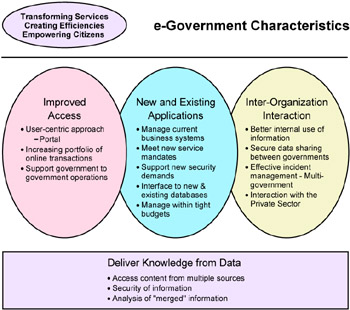3.1 Plan
|
| < Day Day Up > |
|
3.1 Plan
The purpose of this phase is to formulate and document an overall solution plan. The plan should clearly link to the customer's business strategy and initiatives. For example, using a portal solution plays into a company's overall e-business strategy. The plan should detail the scope of the project (the customer's envisioned goals and the business context—in other words, internal and external relationships).
| Note | Best practices do not provide any leverage in the Plan phase. So, for this phase we will focus on providing case study details concerning envisioned goals and issues. |
Task: Document envisioned goals and issues
Part of the issues discovery process is determining the customer's current problems and the direction in which it sees itself moving. Documenting this is important because it helps determine high-level functional requirements, which in turn help scope the project and make good architectural decisions. As part of this process, you should investigate the company's mission and vision statements along with future business goals.
For our case study, these goals are as follows:
-
To increase the effectiveness and timeliness of any government's security, a new infrastructure must be designed to allow disparate government agencies, using information technology, to more effectively share information and intelligence in order to respond to any potential threat. This needs to happen both horizontally (among Federal agencies and Departments) and vertically (among the Federal, state, and local governments). This will allow Federal, state and local government agencies, as well as the private sector, to work together seamlessly. Having the right system of communication (content, process, and infrastructure) is critical to bridging the existing gaps between these agencies and organizations.
-
The future goals or vision of e-government is all about improving citizen services, creating efficiencies to reduce costs, and empowering citizens and businesses that are demanding better and more efficient services. Drivers for this vision range from legislative mandates to market forces such as globalization, supply chain integration, trans-national crime and terrorism, environmental and social threats, and technology trends such as pervasive wireless and advanced integration and analysis techniques.
Figure 3-4 on page 79 summarizes e-government characteristics and key initiatives.

Figure 3-4: e-Government characteristics and key initiatives
The following describe these key initiatives for e-government:
-
Improved access
Improving access includes enabling transactions for citizens, agencies, and the private sector by whatever channel they choose to utilize and providing the flexibility to adapt to new technologies as they become available
-
New and existing applications
Integration is essential to running a government in today's world, requiring both process and technical integration. To meet these challenges, government agencies must look to delivering more efficient services while managing their budgets. Taking advantage of new technologies that enable more self-help capability can provide a means to deliver services and information to citizens and businesses while reducing the overhead of more expensive resources.
Leveraging existing systems supports the visions of e-government by the cost-effective measure of re-using systems that are already in place and proven to be reliable and functional. Transformation of existing processes and effectively integrating to existing systems are crucial to providing new levels of services.
-
Inter-organization interaction
Citizens and businesses need to interact with all levels of government. Therefore, to realize the vision of e-government, intergovernmental linkages must be developed and facilitated through underlying technology. Providing better communications capabilities that use interactive messaging facilities, Web portals that aggregate data from disparate systems, electronic team rooms, and messaging gateways to facilitate information exchange could all be established as a way to enable cross-agency, cross-government, and government-to-private-sector information sharing.
Collaboration can empower businesses and citizens while providing better governmental services.
-
Deliver knowledge from data
It is imperative that you obtain data from various sources, aggregate and sort this data, and present meaningful results from it.
In essence, the future business goals are to provide for better communication and information sharing across disparate agencies. It plans to allow government organizations and private individuals to work together more efficiently and effectively. The use of existing systems integrated with new systems is the infrastructure to enable these goals.
| Note | The output of this task is the Envisioned Goals and Issues work product. |
|
| < Day Day Up > |
|
EAN: 2147483647
Pages: 82